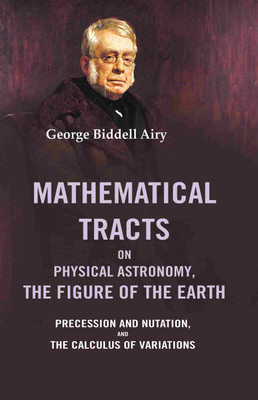Mathematical Tracts on Physical Astronomy, the Figure of the Earth: Precession and Nutation, and the Calculus of Variations(Paperback, George Biddell Airy)
Quick Overview
Product Price Comparison
These are reprint editions reprinted with the help of original book just to give the original look and feel we do not change its format and text due to which in some cases the text is not like new. About The Book: Mathematical Tracts on Physical Astronomy: The Figure of the Earth, Precession and Nutation, and the Calculus of Variations by George Biddell Airy, Sir George Biddell AiryŌĆÖs 1828 tract series combines celestial mechanics, EarthŌĆÖs shape, axial motions, and optimization methods. He analyzes Earth's oblate spheroid figure under gravity and rotational forces, then derives how gravitational torques from the Sun and Moon cause precession (a slow 26,000ŌĆæyear conical wobble) and nutation (a smaller 18.6ŌĆæyear ŌĆ£noddingŌĆØ oscillation) of the Earth's spin axis. The work also introduces foundational principles of the calculus of variations, using the EulerŌĆōLagrange method to optimize integrals and solve physical problems. Intended for university students, it unifies rigorous mathematics with astronomical applications."George Biddell Airy", "Motions of the Earth - PSC Exams", "Calculus of variations" About The Author: Sir George Biddell Airy (1801ŌĆō1892) was a prominent English mathematician and astronomer whose work significantly influenced astronomy, physics, and applied mathematics. He authored over 500 papers, with key works including *Mathematical Tracts on Physical Astronomy* (1826), studies on lunar theory and EarthŌĆÖs shape (1828), and *Gravitation* (1834). His investigations into magnetic deviations in iron ships (1839) had practical naval applications. Airy also contributed to popular science through lectures and textbooks on astronomy, trigonometry, and magnetism. His rigorous works on observational errors, partial differential equations, and sound theory cemented his legacy as a pioneer in both theoretical and applied sciences. The Title 'Mathematical Tracts on Physical Astronomy, the Figure of the Earth: Precession and Nutation, and the Calculus of Variations


